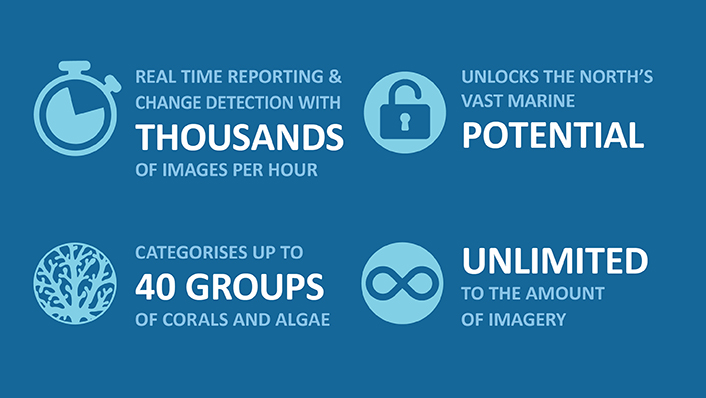The challenge
AIMS collects hundreds of thousands of underwater images per year to monitor the health and diversity of Australia’s tropical north.
Before the introduction of automated image analysis techniques, these images were examined manually by an experienced marine ecologist. This created a bottleneck in having to manually analyse images which limited how much of the marine ecosystem AIMS could survey and understand.
The approach
AIMS developed an image analysis system named BenthoBox. It uses state of the art Artificial Intelligence (AI) algorithms utilised by tech giants like Google and Facebook.
BenthoBox has been taught to learn from millions of images, collected by AIMS in the past decade across northern Australia, to categorise up to 40 different groups of corals and algae.
Data that took months to analyse can now be processed at a rate of tens of thousands of images per hour, allowing for rapid reporting and change detection. The technology classifies images hundreds of times faster than humans can, freeing-up researchers to do more science and gain a better and faster picture of the changing marine environment.
The impact
This automation means there is no limit to the amount of imagery AIMS can analyse. It provides the nation with a level of data that had until now been unattainable to fill knowledge gaps across northern Australia.
The implementation of this technology provides reef managers, stakeholders and policy makers with accurate, reliable and near-real time data on the state of Australia’s tropical marine environment.
This critical data:
- Unlocks the North’s vast marine potential so that the viability of future resource projects and significant marine-based business ventures can be assessed;
- Supports the lifestyle and livelihoods of one million Australians living along the northern coastline; and
- Protects the universal value of the environment for future generations.


